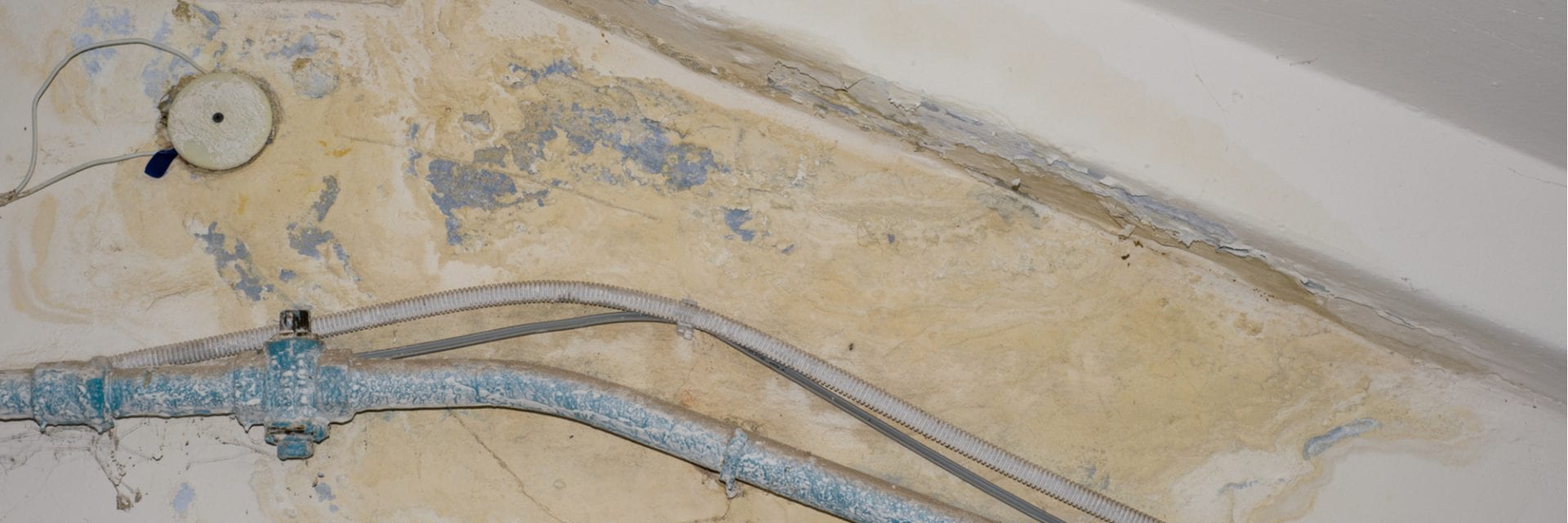If you need assistance with mold prevention and mold remediation as discussed in this article, call us at 973-366-4660 or e-mail us at info@atlenv.com for details and a free estimate.
Written By: Robert E. Sheriff, MS, CIH, CSP, President
February 28, 2020
After the Flood – Mold Prevention and Mold Remediation
How To Prevent Mold After A Flood and Water Damage
Whether it is a leaky roof, a broken pipe, or a flood there are steps you can take to prevent—or minimize—the mold growth.
- The first step is to determine if the water came from a sewer or flood involving sewage—If it could be sewage then bacteria, as well as mold may be involved. This can involve the use of different chemicals for cleaning/disinfecting.
- Regardless of the source—sanitary (just mold) or unsanitary (mold and bacteria), the first thing is to eliminate the source and clean-up the water and debris as fast as possible—within 24 to 48 hours. This will reduce the possibility that mold will have sufficient time to grow and bacteria can be removed before it results in infection or disease.
- Reduce the humidity using dehumidifiers—remember air conditioners are also dehumidifiers and by also reducing the temperature, you are reducing the onset and rate of mold growth. The ideal is to reduce the humidity to below 60% and keep it there. (The temperature should be kept to 70°F for less as well).
- Remove water-damaged building materials as floors and walls—and also water-damaged furnishings. For walls such as sheetrock walls, it is best to remove at least 18 inches above the visible water damage—(wicking of water up walls is not always visible). Mold can grow even where there is no visible water damage.
- Dry out structural materials as wall studs and floor joists using dehumidifiers and floor fans on sheetrock plaster, paneling or other water-soaked flooring or walls, even ceilings will expose wall studs, and floor or ceiling joists. There are instruments to tell if surface and wood is sufficiently dry to prevent mold growth.
- If there is concern about whether the demolition and dehumidification are adequate, contact an Indoor Air Quality (IAQ) Mold Consultant to inspect, and test for moisture and mold before the replacement of floors and walls is performed. This inspection may involve the use of a moisture meter, infrared cameras, surface sampling for mold and air sampling for molds, as well as a visual inspection (go to info@atlenv.com).
- Replace the water damaged surfaces. Always consider the use of mold-resistant materials (like mold-resistant sheetrock or mold-resistant paints), especially where humidity, condensation or future floods are real possibilities.
- If concerned about the completeness of the work and ability to re-occupy the space, again get the assistance of a consulting/testing company to visually inspect, test surfaces for mold and sample the air (making sure an outdoor reference sample is taken as well). If the work is not complete, the consultant can develop a remediation plan or at least a checklist of additional remediation needed.
Atlantic Environmental has provided mold consulting, testing, remediation plans, final clearance inspections/testing and expert witness in insurance-related flood claims since our founding in 1978.
Contact us by phone or use our online form to get in touch. We will be happy to discuss and help you with mold prevention and mold remediation after a flood.
Our primary service areas are New Jersey NJ, New York NY, (New York City), Pennsylvania PA, Connecticut CT, Delaware DE, Massachusetts, (Boston) MA, Rhode Island RI, Washington DC, Wisconsin WI, Maryland MD, Michigan MI, Illinois (Chicago) IL, Virginia VA, Indiana IN, Georgia (Atlanta) GA, Alabama AL, North Carolina NC, South Carolina SC, Tennessee TN, Texas (Dallas, Ft Worth) TX, Oklahoma OK, DC, Arkansas AR, Florida FL. We can service most other areas of the U.S. but with some added travel charges.



